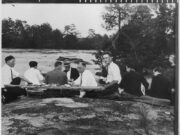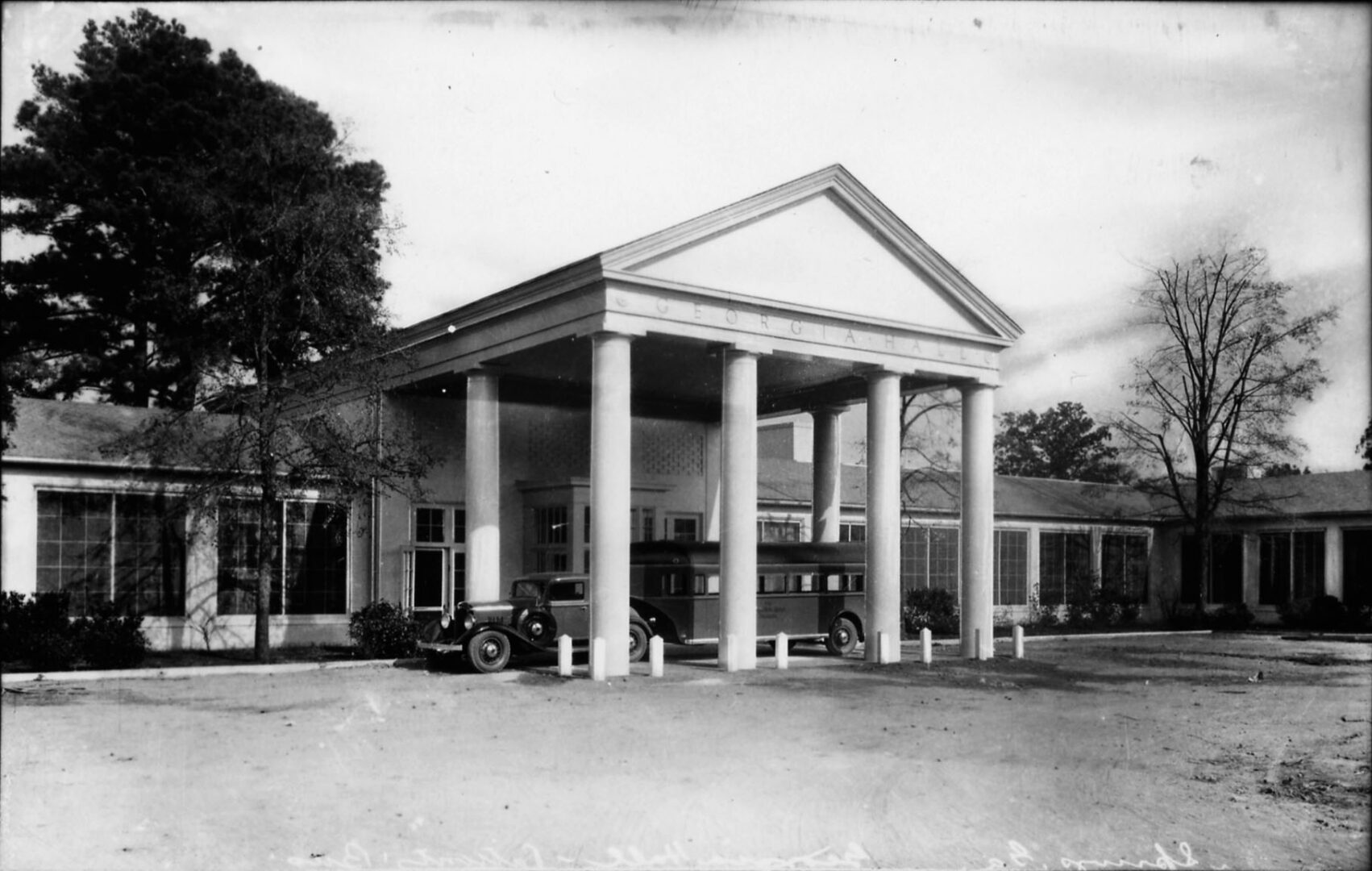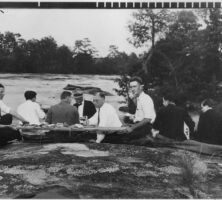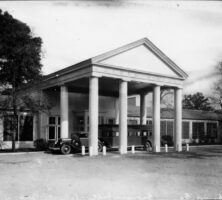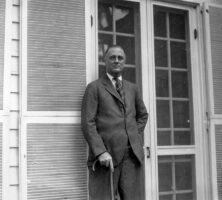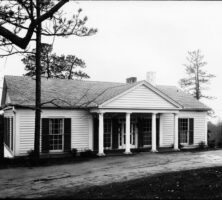Between 1933 and 1945 the eyes of the nation often focused on Warm Springs, where U.S. President Franklin D. Roosevelt maintained a residence. After discovering in the fall of 1924 that the southern Meriwether County springs eased his polio symptoms, Roosevelt built a treatment center for polio victims there as well as a residence that later became known as the Little White House.
He died at Warm Springs on April 12, 1945. Since then the Little White House has served as a memorial for the thirty-second president, and Warm Springs has returned to its pre-Roosevelt status as a quiet southern village.
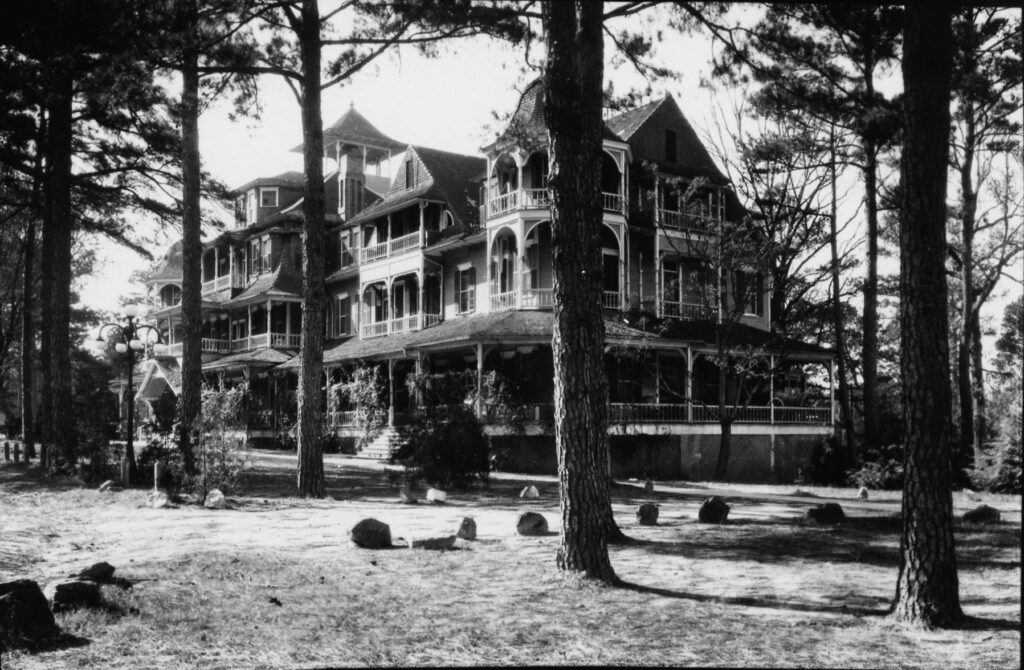
Located sixty miles south of Atlanta, Warm Springs grew up around natural springs with 88-degree (Fahrenheit) water that flows at a rate of approximately 914 gallons per minute, year round. The resort, which dates back to 1832, brought prosperity to the neighboring village. In the early years the mail route between Talbotton and Newnan serviced the town twice a week. By 1849 the village had a store, a doctor, a shoemaker, a blacksmith, and an academy. In 1881-82, 200 people lived there. The town has been the site of Warm Springs National Fish Hatchery since 1899. In the early 1890s Benjamin F. Bulloch founded the town of Bullochville just across the Southern Railway track from Warm Springs. The Atlanta, Birmingham, and Atlantic (later Coast) Railroad reached the two towns in 1907.
Roosevelt was instrumental in transforming Warm Springs into a rehabilitation facility for polio patients. In 1925 he wrote a series of columns for the Macon Telegraph so that Thomas M. Loyless, the paper’s editor and Roosevelt’s personal friend, could devote more time to improving roadways in and around Warm Springs. The fledgling center benefited from its association with the future president, who earned the nickname “Dr. Roosevelt” for the support he offered to fellow patients at Warm Springs.
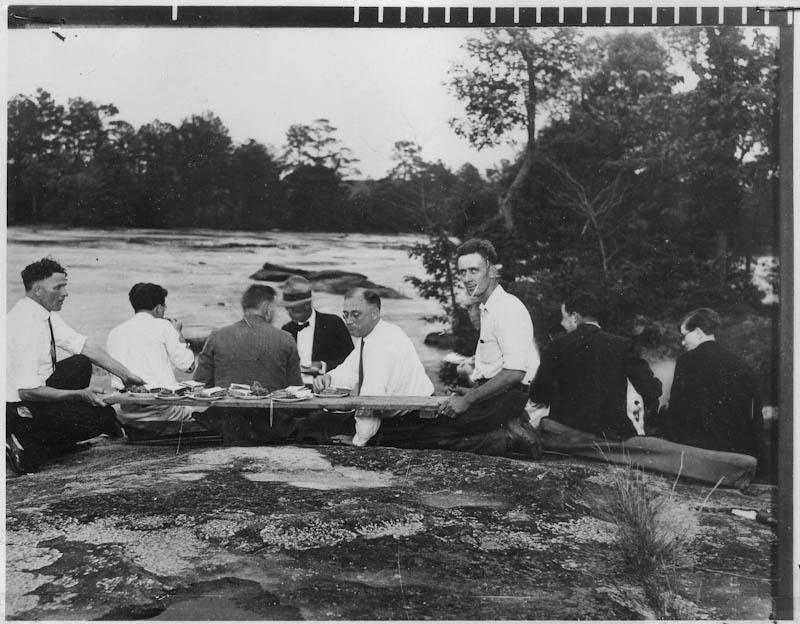
When Roosevelt became governor of New York in 1929, and particularly when he was elected president in 1932, Warm Springs entered a new era. Whenever Roosevelt arrived or departed, large crowds of local citizens and tourists assembled to greet him. The town also welcomed guests from around the nation and the world; scientists from Austria and Germany visited the Little White House, as did government leaders, national news correspondents, business leaders, and occasionally Hollywood stars. To accommodate the recurring flood of visitors, a new airport, Roosevelt Field, was built just north of town. A nine-hole golf course was designed by Donald Ross, and the town eventually got a new post office and a community center. The polio treatment center, known as the Georgia Warm Springs Foundation (later the Roosevelt Warm Springs Institute for Rehabilitation) underwent extensive growth.
During World War II (1941-45) Roosevelt had little time to visit Warm Springs, but in March 1945, near the beginning of his fourth term, he arrived for an extended stay. Although he looked haggard, he appeared to benefit from the rest. On the afternoon of April 12, however, as local leaders were preparing a barbecue and patients at Warm Springs were readying a special performance, townspeople were shocked to learn that Roosevelt had died. Eleanor Roosevelt immediately flew to Warm Springs to accompany her husband’s body back to Washington, D.C., and thence to Hyde Park, New York. The cortege, with a large military honor guard, traveled past the Foundation to the Warm Springs depot, where the president’s coffin was placed on a train for the journey north.
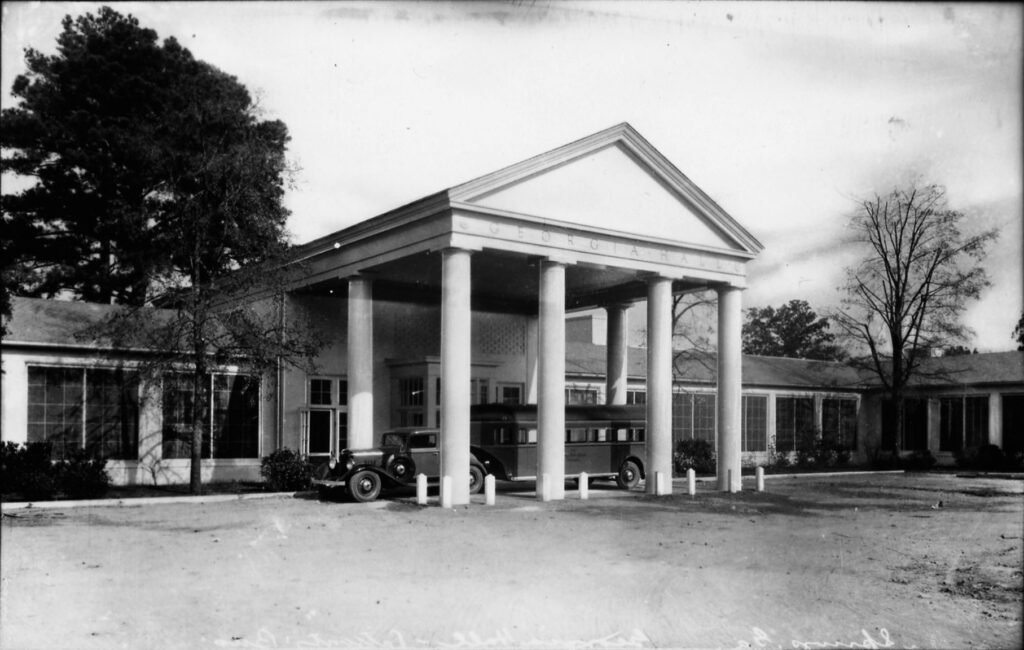
After Roosevelt’s death the national spotlight turned elsewhere. The population of Warm Springs, which grew from 400 to 608 between 1930 and 1940, returned to its pre-1930 level. Local business suffered until the latter part of the twentieth century, when a group of merchants and property owners began to revitalize the area as a shopping and dining center.
Since 1948 the Little White House has been open to the public under the management of the Parks, Recreation and Historic Sites division of the Georgia Department of Natural Resources. The National Park Service declared the house as well as the Warm Springs historic district a National Historic Landmark in 1980. Although the warm public pools closed soon after Roosevelt’s death, visitors can dip their hands in a fountain fed by the famous springs. Warm Springs still periodically attracts dignitaries: two Democratic presidential candidates, John F. Kennedy and Jimmy Carter, made campaign stops there. In 1995 President Bill Clinton—joined by Carter, former U.N. ambassador Andrew Young, and other national figures—presided over services marking the fiftieth anniversary of Roosevelt’s death.
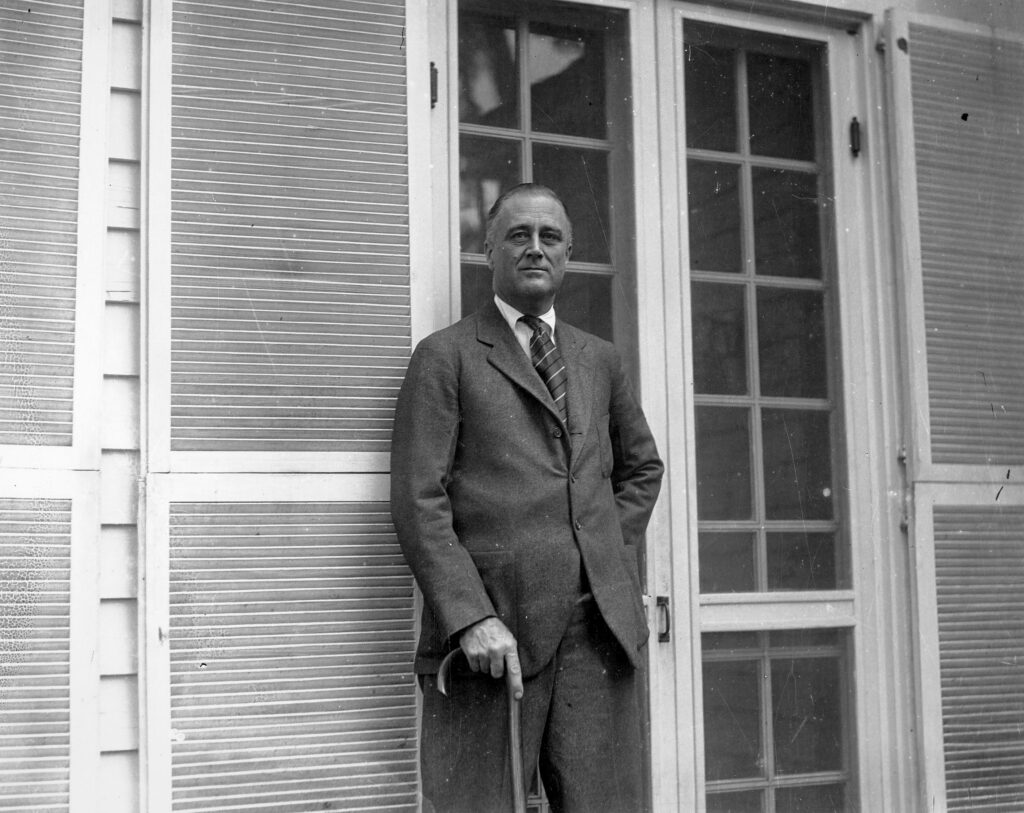
In 2005 Home Box Office released Warm Springs, a film exploring Roosevelt’s time at Warm Springs in the 1920s. The film, which was made on location in Warm Springs, stars Kenneth Branagh as Roosevelt and Cynthia Nixon as Eleanor Roosevelt.


